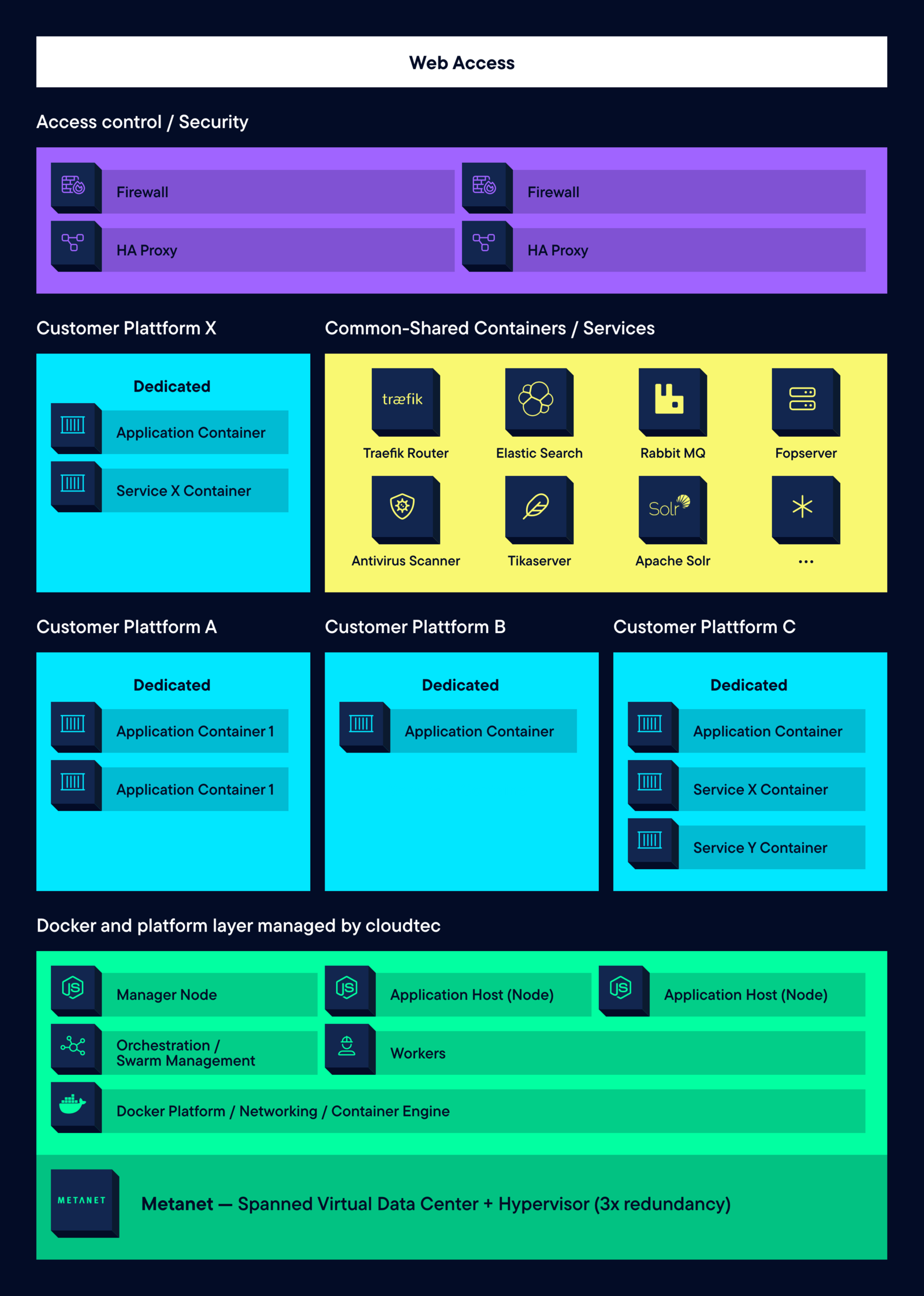This infrastructure model consists of two or more clouds (private, community and public)
This infrastructure model consists of two or more clouds (private, community, and public) that are individual entities but are constantly connected by a secure tunnel that allows data and application transfer. From an architectural standpoint, hybrid cloud environments consist of an internal private cloud infrastructure that seamlessly connects to one or more external cloud providers. As cloud computing becomes more and more prevalent in the market, and thus new solutions are constantly being offered, it is safe to assume that enterprises will also use hybrid clouds. Outsourcing parts of your internal components or extending services with public cloud solutions is a great way to leverage these new technologies. Hybrid clouds can help organizations expand their internal networking capabilities, mirror systems in the public cloud, have a low-cost on-demand disaster recovery strategy and create test environments without having to purchase new hardware. Hybrid clouds can also keep tiers apart when there are jurisdictional issues or sensitive data. Keeping sensitive data in-house and storing non-sensitive data in the public cloud is also possible with hybrid infrastructure. The possibilities to combine these new technologies are constantly expanding. As definitions, formats and protocols become more homogeneous, it becomes easier and easier to connect different types of systems together.

The figure represents a schematic diagram of our hosting infrastructure. The private cloud is connected to local clients through the local network and provides basic functions such as Active Directory service, file and print services, and application servers. In this example, the private cloud is extended by two other cloud solutions: The virtual private cloud and Egnyte. The virtual private cloud is a recently released alternative to the regular private cloud. In the virtual private, a customer is assigned a private cloud within the physical infrastructure of the public cloud. By specifically allocating resources within the cloud, the customer can be assured that he or she will have access to all of the promised capacity and can thus be billed on a pay-as-you-go basis. Within its EC2 services, Amazon offers the VPC (Virtual Private Cloud) option to integrate a private cloud with a public cloud. The two networks are connected via VPN, with both sides requiring a gateway to create a secure data tunnel. This figure also includes the VPC test servers, which are not constantly active. This makes using a virtual private cloud very affordable, as resources used are paid for - the company does not need to purchase new infrastructure and could still run tests if necessary. This scenario is also associated with another cloud provider called Egnyte, which offers hybrid file server solutions. The file servers that reside on the private cloud are synchronized with the Egnyte servers, which is why a backup of current data is always available. Egnyte's solution provides community and collaboration tools through which files can be accessed globally. Users can access data either through a local network, which is very fast and direct; but they can also access it through remote cloud-based access. It also allows the use of specially designed mobile apps for iPad or Android cell phone to open files, always following the security policies defined on the private cloud server. The connection possibilities of clouds are technically endless. It is possible to connect a virtual public cloud to another public cloud that has outsourced data storage to a third cloud provider. In general, it should be noted that the probability of errors increases the more cloud solutions you use.
